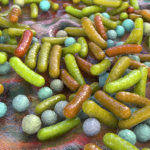By David Blyweiss, M.D., Advanced Natural Wellness
May 23, 2014
- Are you unknowingly carrying this virus?
- 4 ways to increase your odds of beating this infectious disease
- Advanced protection for your liver
Have you ever been tested for hepatitis C?
Until recently, this type of screening hasn’t been on my list of must-have tests for patients. But shocking new data has me testing all of my patients between the ages of 50 and 68 for this virus.
You see, it turns out a rash of Baby Boomers who have never had symptoms are turning up with this virus. This may sound odd. But about 75% of all hepatitis C (HCV) infections are showing up in people who were born between 1946 and 1964. And a large number of them don’t even know they have the virus.
Nobody really knows why this group is the most affected. Some are attributing it to the high rates of drug use back in the 60s and 70s. Others are pointing to tainted blood that may have been used in transfusions prior to 1992.
But there are a lot of other ways people may have acquired the infection.
Open your arteries, improve blood flow for a new health miracle...
Did you know your circulatory system has over 60,000 miles of arteries, veins and other blood vessels, if stretched end to end?
But as you age, your blood vessels undergo changes, which may cause them to stiffen, thicken and get clogged.
GOOD NEWS! Doctors have now identified a “Miracle Molecule” inside your arteries that helps OPEN your arteries and IMPROVE blood flow.
It’s what Dr. Valentin Fuster calls it, "One of the most important discoveries in the history of cardiovascular medicine."To you, that means...
- Healthy blood pressure
- Sharper mind and memory
- Skyrocketing energy and muscular strength
- Increased pleasure and passion in the bedroom
- Improved circulation to every cell and organ in your body
Go here to discover a new natural way to significantly boost the levels of this miracle molecule in YOUR body NOW!
A tattoo or piercing with dirty tools or ink could be the culprit. Healthcare workers are often exposed to infected needles and blood. You can even get HCV if you’ve had sex with someone or shared a razor or toothbrush with someone who’s infected.
However, a lot of folks may never know how or when they became infected.
When you think of HCV, the first thoughts that probably enter your mind are liver damage, cirrhosis and liver cancer. And these are very real threats. This is why it’s so important you get tested.
On the other hand, if you do test positive, there are a number of things you can do to reduce your risk of serious liver damage.
The most important thing anyone diagnosed with hepatitis C can do is take care of their liver. And if you take steps now, it can greatly reduce your risk of having to resort to months of expensive and debilitating treatments that may or may not work for you.
All it takes is a little effort to treat your body right and take measures to protect your liver. Here are four things you can do immediately to beat the odds:
1. Never take any product containing acetaminophen. If your liver is compromised in any way, you should avoid acetaminophen at all costs. Even a small amount of acetaminophen can damage the cells in your liver. Worse, this drug is the leading cause of acute liver failure in the U.S.
The World's Quickest Solution for Ending Prostate and Urinary Misery
This has recently been revealed to be one of the only real breakthroughs in prostate health.
The seeds of a strange fruit (sometimes called "Chinese Apples") hold powerful phytonutrients that are a revolution in prostate health.
In fact, UCLA and Veterans Administration research have now proved this to be true.
Not only that, but it may be the worlds quickest solution for ending prostate misery.
Simply stated, these phytonutrients represent a huge step beyond beta sitosterol, saw palmetto, and other phytosterols alone.
Simply click HERE if you want to have fast prostate relief...restful, uninterrupted sleep...no more constant "urges to go"...enhanced virility...and optimal prostate support for life.
2. Cut out the alcohol. It’s easy to think a “nip” every now and then won’t hurt you. But alcohol is quite damaging to the liver. If your liver is even partially compromised, it’s not safe to drink beer, wine or any sort of hard liquor.
3. Don’t smoke. Smoking taxes your liver. Cigarettes contain a large number of toxins and carcinogens. If you have hepatitis C or any other condition that damages the liver, smoking could make things much worse. It can increase scarring and damage, and is also associated with a higher risk of liver cancer.
4. Eat a healthy diet. People with hepatitis C are more likely to develop insulin resistance and diabetes. This is a double-whammy for the liver. Both add to the liver’s fatty load, which leaves the liver vulnerable to scarring and cirrhosis.
Tip: Avoiding high fructose corn syrup and processed foods high in carbohydrates will go a long way to protect your liver. I recommend permanently changing your eating habits to a Mediterranean-style diet. You can load up on all the fruits and veggies you want, whenever you want. Make about 87% of your diet plant-based and 13% meat-based.
There are also several nutrients that can provide advanced protection for your liver…
Milk thistle contains flavonoids that support liver function by raising protective glutathione levels. It might also inhibit HCV infection by hindering entry into liver cells. Take 420–600 mg. of silymarin per day from an herbal extract of milk thistle standardized to 80 percent silymarin content.
Phosphatidylcholine helps to prevent fat from being deposited in the liver. It also works well in combination with silymarin to bolster the function of liver cells. Take 900 mg. a day of this nutritional supplement to improve liver function.
Selenium also appears to be effective in suppressing the hepatitis C virus. This is a mineral that patients with the virus are often deficient in. However, it may help neutralize free radicals that can lead to liver damage. I recommend taking no more than 200 mcg. of selenium daily. As a general rule, that’s about what you’ll find in most multivitamin supplements.
All of these tips can go a long way to allowing for a long and healthy life without ever experiencing any HCV symptoms.
However, I do have a word of caution.
If you’re acutely ill with severe liver damage due to your infection, it’s very important to consider aggressive medical treatment. While I don’t recommend it as a first line of defense, there’s a time and a place for it.
Sources:
C Hézode, et al. “Impact of smoking on histological liver lesions in chronic hepatitis C.” Gut. Jan 2003; 52(1): 126–129.
Chuang SC, et al. “Interaction between cigarette smoking and hepatitis B and C virus infection on the risk of liver cancer: a meta-analysis.” Cancer Epidemiol Biomarkers Prev. 2010 May;19(5):1261-8.
Veldt BJ, et al. “Increased risk of hepatocellular carcinoma among patients with hepatitis C cirrhosis and diabetes mellitus.” Hepatology. 2008 Jun;47(6):1856-62.
Agius L. “High-carbohydrate diets induce hepatic insulin resistance to protect the liver from substrate overload.” Biochem Pharmacol. 2013 Feb 1;85(3):306-12.
Blaising J, et al. “Silibinin inhibits hepatitis C virus entry into hepatocytes by hindering clathrin-dependent trafficking.” Cell Microbiol. 2013 Nov;15(11):1866-82.
Moscarella S, et al. “Therapeutic and antilipoperoxidant effects of silybin-phosphatidylcholine complex in chronic liver disease: preliminary results.” Curr Ther Res 1993:53:98-102.
Khan MS, et al. “The possible role of selenium concentration in hepatitis B and C patients.” Saudi J Gastroenterol. 2012 Mar-Apr;18(2):106-10.





